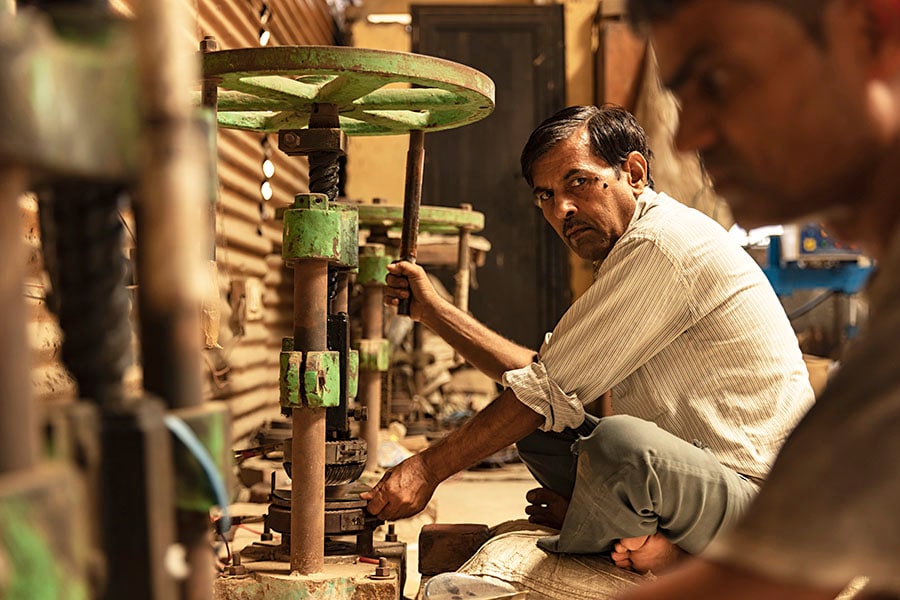Why MSMEs struggle to scale up in India
Expensive and time-consuming paperwork, lack of access to financial aid and marketplaces impede the growth of micro enterprises
 MSMEs contribute about 30 percent to India’s GDP and 45 percent to India’s exports
Image: Getty Images
MSMEs contribute about 30 percent to India’s GDP and 45 percent to India’s exports
Image: Getty Images
About 4 crore micro, small and medium enterprises (MSMEs) exist in India, according to the Ministry of Micro, Small, and Medium Enterprises, and contribute about 30 percent to India’s GDP and 45 percent to India’s exports. The Indian government has implemented various policies and schemes over the years to boost the production of MSMEs, aiming to increase its contribution to GDP by up to 50 percent. However, the biggest challenge MSMEs face is scaling up from micro to small and medium enterprises.
About 85 percent of micro-enterprises, 3.3 crore units, are based in rural areas, on agricultural land. These are family-owned units that are run without labour. The biggest problems in upgrading these micro units to small enterprises are the lack of capital and the heavy burden of certification and documentation. Also, since they are not located in industrial areas, getting financial help from banks is very difficult.
“Starting my MSME and completing the necessary documentation cost me around Rs 60,000, before getting a loan of Rs 6 lakh from the bank after a wait of 11 months,” says Arif Ali, an MSME entrepreneur and resident of Bulandshahr district in Uttar Pradesh. He says the sheer amount of paperwork and certification required from various departments is not just time-consuming but also very expensive. “The CA alone took Rs 25,000 for file charges,” he adds.
Dr Tamal Sarkar, senior advisor at Foundation for MSME Cluster, says most of the time MSME entrepreneurs get loans, but these are personal loans since they are not based in industrial areas. Since personal loans are term loans, entrepreneurs have to pay a very high interest rate.
About 14 percent, or 6 million, micro enterprises have the potential for growth and scaling up to small and medium enterprises. However, supply challenges, bank repayments, and financial management remain big challenges for them. Sarkar says there is a large deficiency of subcontractors who specialise in providing solutions for issues such as financial and supply management. “They need people who are locally available and can handle HR, financial accounts, suppliers, banks, certifications, and regulations,” he adds.
Further, micro enterprises face the challenge of coming up against bigger companies when they take their products to the market. Despite the growth of digital marketplaces, visibility for low-capital enterprises on these marketplaces remains a challenge.
Also read: Interim Budget 2024 has precious little on MSMEs
“Many micro enterprises have their products registered on platforms such as Amazon and Flipkart, but if they are not paying for promotion on these websites, their product will show at the very end of the search,” says Dr Bhupendra Bahadur Tiwari, professor and director, School of Economics and Commerce, CMR University, Bengaluru.
Over the years, the government has increased the budget for MSMEs. In FY19, the Ministry of MSME allocated Rs 6,513 crore for the development of MSMEs, which was increased to Rs 25,823 crore in FY23. Further, in the interim budget of 2024-25, the government announced the establishment of a fund totalling Rs 1 lakh crore for 50 years of interest-free loans for MSMEs. This March, banks deployed about Rs 24 lakh crore in gross bank credit to MSMEs.
Despite the various attempts by the government, micro enterprises in semi-urban and rural areas find it difficult to get much-needed financial help. The share of micro enterprises based in semi-urban and rural areas accounted for 22.54 percent of total bank lending in FY24.


















